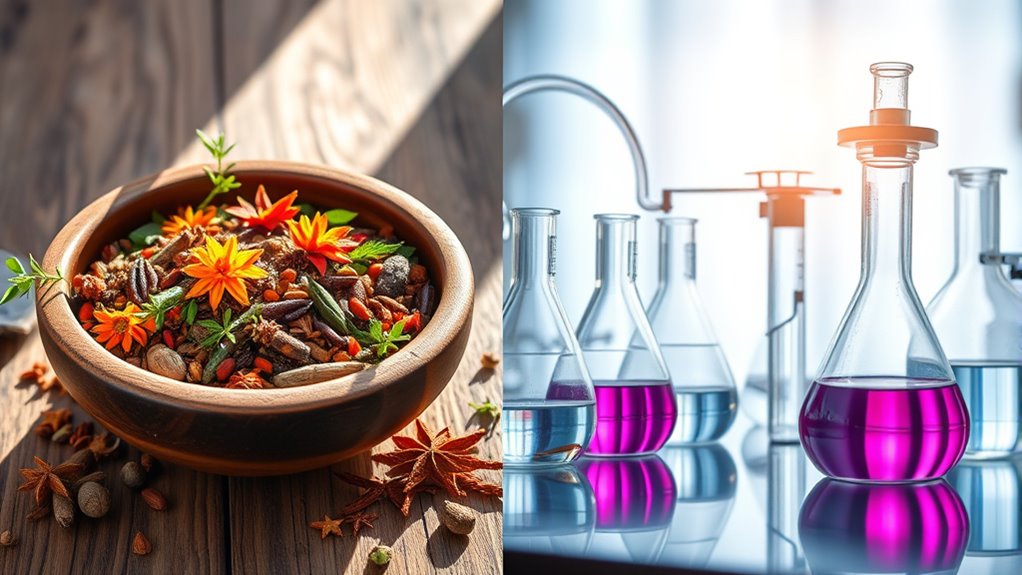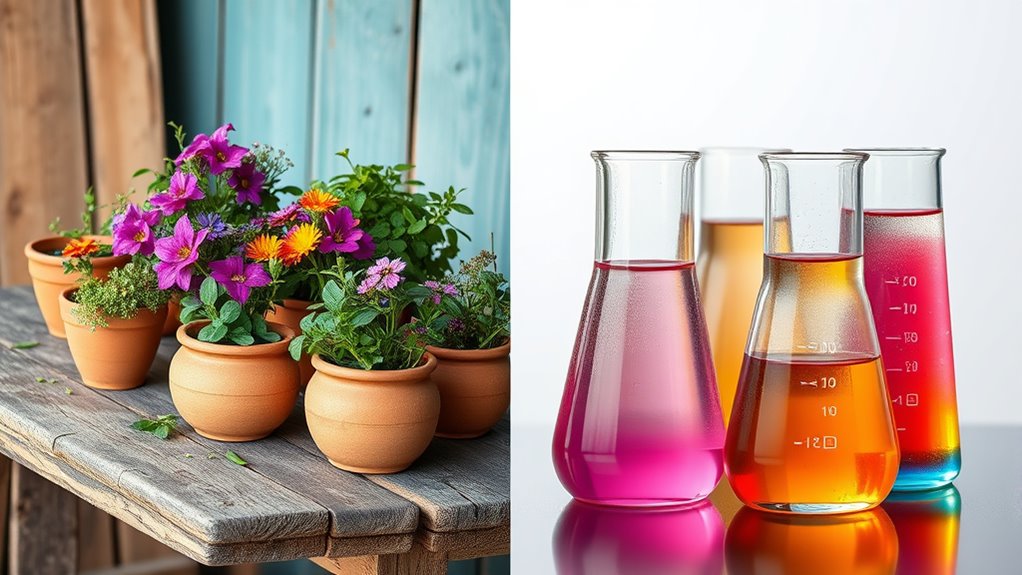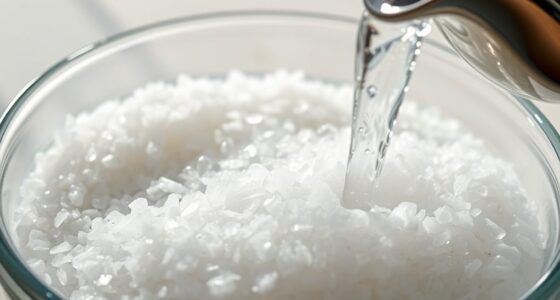When it comes to cleansing, traditional methods relied on natural ingredients like olive oil and honey, while modern science focuses on pH balance and skin health. Ancient practices laid the foundation, but today’s products often blend these traditions with advanced formulations that include hydrating agents and probiotics. This fusion nurtures your skin’s natural microbiome. Want to discover how these practices can work together for your cleansing routine? There’s plenty more to explore on this topic!
Key Takeaways
- Traditional cleansing methods relied on natural ingredients like olive oil and honey, emphasizing holistic skin care practices.
- Ancient soaps were alkaline, unsuitable for skin, highlighting the early lack of pH balance understanding in cleansing.
- Modern products prioritize pH balance, incorporating hydrating agents and probiotics to maintain skin health.
- The integration of traditional herbal remedies with scientific advancements creates a comprehensive approach to skin care.
- Regular skin treatments enhance the effectiveness of modern cleansers, promoting overall skin vitality through consistent care.

When you think about cleansing methods, it’s fascinating to see how they’ve evolved over the centuries. Traditional cleansing methods, often rooted in ancient civilizations, relied heavily on natural ingredients like olive oil and honey. In ancient Greece, olive oil wasn’t just a staple in the kitchen; it served a dual purpose in skin care. People used it to cleanse their bodies, taking advantage of its mild antimicrobial properties without the backing of modern science. Similarly, the Egyptians swore by honey, tapping into its natural benefits for the skin.
Cleansing methods have evolved from ancient traditions using olive oil and honey to modern formulations, blending history with advanced skin science.
The Romans took cleansing a step further with their public baths, where they employed olive oil and strigils for cleansing. This early understanding of physical exfoliation laid the groundwork for skin care practices that are recognized today. However, the soaps of that time were typically alkaline, with pH levels ranging from 9 to 10. That’s far too alkaline for your skin, which thrives at a pH of around 4.5. Additionally, the importance of pH balance in skin care has become a crucial aspect of modern formulations.
Today, modern cleansing products prioritize this balance, reflecting a significant advancement in our understanding of skin health. Fast forward to the present, and it’s clear that modern cleansing methods have transformed dramatically. You’ll find products infused with hydrating agents like hyaluronic acid and probiotics, designed specifically to support your skin’s health. Regular skin treatments can further enhance the effectiveness of these modern cleansers by promoting overall skin vitality.
These advancements stem from rigorous dermatological research, offering formulations that maintain a pH balance, preserving the skin’s natural microbiome. This concept wasn’t even a consideration in ancient traditions, where herbal remedies were the go-to solutions. While traditional methods relied on the simplicity of natural ingredients, modern science has introduced a nuanced approach to cleansing. You can enjoy the benefits of both worlds—incorporating herbal remedies that echo ancient traditions while also taking advantage of the advancements in pH-balanced formulations.
This blend offers a holistic approach to skin care, ensuring that you’re not just cleansing your skin, but also nurturing it.
Frequently Asked Questions
What Are the Differences Between Traditional and Modern Science?
You’ll find key differences between traditional and modern science in their approaches.
Traditional methods often rely on anecdotal evidence and cultural practices, while modern science emphasizes empirical research and data-driven results. You see this in the precise formulations and advanced technologies used today.
Modern science also prioritizes safety and efficacy through rigorous testing, whereas traditional methods mightn’t fully consider the complexities of biological systems, leading to less personalized solutions for individual needs.
What Is the Science Behind Cleanser?
Imagine a gentle wave washing over your face, leaving it refreshed and balanced.
The science behind cleansers focuses on pH balance, usually around 4.5, which mimics your skin’s natural acidity. This helps maintain your skin’s protective barrier.
Modern formulations include hydrating agents like hyaluronic acid and beneficial probiotics, fostering a thriving microbiome.
Conclusion
In the great debate of traditional methods versus modern science in cleansing, both have their merits. While ancient rituals whisper secrets of nature, scientific advancements shout facts and efficiency. Ultimately, it’s about finding a balance that suits you. Embrace the wisdom of the past while welcoming the innovations of the present. Like a dance between the old and the new, let your cleansing routine be a harmonious blend that leaves you feeling refreshed and revitalized.









